Leaderboard
Popular Content
Showing content with the highest reputation on 11/26/23 in all areas
-
I like to close threads off. The one thing that annoys me a little about some threads on here is people start them, lots of people contribute suggestions and you never find out how it ended and it’s helpful to know for the future when other folk have a similar problem. They replaced the window and the tint matches perfectly. However, they also damaged all the aluminium cladding and window beads in the process so I lost my rag a bit about that. They have all subsequently now been replaced too. This all started back in April when the windows were delivered two days earlier than planned and just before the scaffolding went up. I didn’t want to take them as the likelihood of them getting damaged was high. But Heb Homes knew better and said they’d accept the risk. Sure as eggs is eggs a window got smashed and everyone on-site denied it was them. The scaffolding company said it’s what insurance is for 🙄 I pointed out that it wasn’t the money as the timber kit company were covering that. It was the consequential hassle this would generate for me trying to get this fixed and I was right about that as it took 6 months and wasted hours of my time. No idea how much this cost Heb and Nordan but a lot. The good news the two incorrect glazing units were put to good use in some garden rooms in the local town.4 points
-
3 points
-
Would a reciprocating saw do the job? Easily handle 4" stems. I find them way more versatile and easier to use than a chainsaw. Unless you need something long reach?3 points
-
Hello, good morning, and welcome my Fluffy friend ! My comments? 1 - Thinking and reflection time really matters - making mistakes is cheaper if it's in a thought experiment. 2 - Get into a habit of being curious about things outside your current experience - known unknowns, and unknown unknowns. 3 - See Buttercup's advice. Ferdinand3 points
-
Here are a few ideas to get you started. No particular order because everything relates to everything else. A simple eyeball inspection. Where is it in relation to : neighbours (access ownership) , geology (slope, water table, wind, trees, clay, sand, ) all will have an effect on build cost. Services : no foul drain disposal - no house, where's the nearest electricity, water, fiber, phone Trees: TPOs? heave? age - survey them maybe Noise: downwind of a motorway, railway line, airport, Structure: look and worry ,or look and 'feel' its in good nick How far are you from a pond (newts or worse, GCNs) . Or bats, or anything fluffy that ecologists pretend to look after? Technical :by that I mean any dicipline which attracts Professional Indemnity Insurance Structural Survey: choose a surveyor with great care - ask for a fee proposal and an exact definition of the aspects to be surveyed - from at least three reputable firms Law: usual stuff - boundary disputes? access rights Do you need an architect - or architectural technician? Ground around the barn iffy? Wet, dry .... get a reputable ground worker Which surveyour does your mortgage company use (if relevant) Ask around. Who knows what about the history of the place? Estate Agent? Network in the local pub - emphasis on work and listening Best of luck, Ian3 points
-
We have been looking for a property or land for some time but we are complete novices. We at the very start of the process of buying a barn to convert, it has outline planning permission which gives us a lot of information and a degree of confidence. However we are still a bit clueless and this site has already been invaluable in getting information so I thought I would say a quick hello before reading more about self build mortgages and what surveys I should be organising at the moment 👋2 points
-
There’s often a misconception about acoustic insulation It doesn’t have to be particularly thick It’s there to stop the sound rattling around in the void2 points
-
Worth knowing first that there are two main types of sound involved - airborne sound (often talking & music) and impact sound (e.g. opening & closing cupboards, using light switches). This is the stud that I'm currently building - 2 x 70mm metal studs, 2 x 45mm hemp sound insulation, with 2 x GypsoLignum (a heavyweight plasterboard alternative) each side. That should give a theoretical reduction of around 65db against airborne sound, and it's the board & insulation providing that. The staggering physically separates one side of the partition from the other, and it's that which reduces impact sound transmission; resilient bars, or a full double partition are other ways of doing that. You also want to think about the placement of power outlets & switches that are on opposite sides of the partition, to avoid them becoming a sound leakage path. They need to be at least 300mm out of alignment with each other, though 500mm or more is preferable. Tweaking the floor plan can also be useful, if it's not too late. For example installing a fitted wardrobe on the opposite side of a partition to a bathroom adds very useful sound resistance that may make other measures unnecessary for that particular partition. So to answer your questions: Yes, if impact sound is likely to be an issue and / or you can accommodate the modest extra width. No, but I'd probably do it anyway, provided it was traditionally plastered. The airborne sound resistance of solid blockwork is very good and, if it's plastered medium or dense blockwork, you can easily screw anything to it anywhere. If there was a concern about impact sound transmission between certain rooms then, space permitting, I'd likely add a single sided 45mm metal stud wall on one side, set 10mm away.2 points
-
2 points
-
Which is why beyond the heavy stuff, many of us choose to do all the details like this ourselves. If you have the time and can tolerate a slower build, it is the easiest way to make a self build very much cheaper. It also means you can make changes as you go if you see something could be done a slightly different way.2 points
-
2 points
-
It is. But, I'd assume that figure includes the change from gas to ASHP, for the average new build. If the average new build would achieve a SCOP of 2.5, then 40% points of the reduction is coming from the change in heating source. Still leaving a 35% - 40% improvement in building fabric performance, some of which has already been achieved with the 2022 Regs changes.2 points
-
If you are doing Weidmuller, get the configurator and design your terminal block row in there before buying all the bits: - Helps ensure it fits. - Creates a part list you can then use for sourcing the bits. - You can be sure you are getting the right cross-connectors for the different terminal blocks. - If you want to label blocks, it will help you find which are the correct labels for each terminal block. - Great for documentation, as you can add a text comment on each block and then export to pdf/print or even stick it on the inside of your cabinet door! https://www.weidmueller.com/int/solutions/weidmueller_configurator/index.jsp1 point
-
1 point
-
Carpet, underlay. 75mm concrete screed. 150mm hollocore concrete planks. 100mm ish dropped MF ceiling. 12.5mm plasterboard and skim. Zero air paths between rooms. Dead quiet. I can occasionally hear the dishwasher at night. My wife can't but I'm convinced that's coming up the eps beads on the cavity from window to window.1 point
-
The concrete slab and suspended ceiling is more than enough to pass the BCAR sound transmission requirements. We put in 50mm mineral wool as well, just to be sure. All good. I'm assuming your suspended ceiling will be a metal system? Fyi unless you've massive spans you'll be using 150mm precast slabs. Oh, instead of the 25mm insulation and 75mm screed, consider 50mm TLA, UFH, then 50mm liquid. Far faster job.1 point
-
@Nick Laslett We have family who have done an identical build to our proposed one and they say the sound proofing is excellent (though they don't have little kiddos so only their own TV noise to work from). Funnily enough the architect has put in a pre-cast concrete stairs (even though we specified timber). Am I right that the concrete in particular is an additionally good sound proofing way to go? Good to know about the doors! We're in the rep of ireland, so not sure what ours are like but I'll check that.1 point
-
Just to say, that's all good advice. You need density and decoupling. The block provides only density. Also, hence 2 layers of board is better than one. It does depend a bit on the type of noise, what function is on the other side, and whether the wall is subject to impact. A variety of construction may provide better value. I've done lots of acoustic walls where it was critical, and tested. I've always gone with stud, whether steel of timber. They never work as well as the brochures say, so build the next level up.1 point
-
Yeah, lateral compression does nothing. Took the wall down, trimmed some bales, put it back up, and now have a wallplate running all the way around: The bottom 3 bales on the SW corner could still be narrower, but it's not structurally fatal, and I'm pretty sure I can trim them back any time - so, on to compression: this little section of wall is separated from the rest by window and door, so makes a nice test bed. Even very light compression has turned it solid, but the more the better. I'd like to squash by at least 10cm so the straw is 2M high - but if I can get the wallplate parallel with the door header, even better. Wood for the roof has arrived, so I can get on with that once compression is done. I'd like it to have a waterproof roof on well before christmas, so I'm on a bit of a deadline now. Fortunately, the weather seems to be cooperating... all except for temperature. I'd been using D4 wood glue to put the wallplate together, but that says it doesn't work below 10°C. PU glue says it needs 5°C. Today was 3°C, so I ended up using some "sticks like sh*t" that claims to be fine down to -40 or so. Bit of a learning moment, and proof, if proof were needed, that I should've had this finished long ago.1 point
-
1 point
-
I had a bloke tell me that once but I proved he had been doing it WRONG for 20 years, never saw him again 😉1 point
-
Yes the two 50 mil stud walls Double boarded (staggered) Is what I install splitting student accommodation blocks Only difference is the top layer is fire board It makes for a very good acoustic setup I’ve just split a unit into three with a similar setup two lots of offices and sawing machines running all day in one unit1 point
-
The government decided the rules on barn conversions should be relaxed some years ago but not all councils and planning officers are so keen. Is it a Class Q approval or regular Outline Planning Permission or ? If the barn has planning permission for a conversion make sure its sound enough to be converted. Would it need underpinning? Some councils appear to consider underpinning as evidence it needs too much work to be "converted". Others take a more relaxed view. So if down the road Building Control demand it needs underpinning that might invalidate your planning permission. Yes its quite possible for Building Control to insist you do something that the Planning Department won't allow. I think this is quite rare but quite problematic when it occurs.1 point
-
Re sound proofing this was my only regret with my build. Stud wall between office/occasional bedroom and second bedroom, wood stud with single plasterboard each side and sound insulation between studs = poor result, likewise single plasterboard on downstairs ceiling with sound insulation above = poor result. In hindsight I would have used decoupled studs etc for the stud wall and used sound rails and double boarding fir the ceilings, hey I have 20.20 hindsight.😇1 point
-
1 point
-
Reading this makes me realise again how lucky I was with my builders. I did all my own stud work and found it very rewarding. I got soo much satisfaction from my build and proud of what I did, it’s why we “self build”.1 point
-
It took me a while to realise that they don’t care about your home as much as you’d like them to, even the very best guys I’ve had on site see it as just a job. For us it’s our eventual home that we’ve sunk a lot of money into but also a lot or ourselves into. It takes years to get to the building stage and we’ll have spent that time staring at plans and fretting over every element of the design and look. One of the kit builders kept saying it’s just wood and nails. Eventually my other half got so fed up hearing this she snapped at him one day saying actually it’s our effing home. I also made a point of calling it our home in any comms rather than house or building.1 point
-
Just a heads up... I went to a few carpet shops and about half told me that ALL their carpet and underlay was suitable for UFH. What they mean is that the carpet won't be damaged by your UFH not that it will let any heat through. The manufacturers data normally has the TOG info in it but many shops seem to throw the data away. You need to be sure anything they tell you applies to the carpet you are buying. Match up the part numbers or order codes with the same number in the manufacturers data. I asked one sales rep about the TOG value and she went to investigate, came back with TOG=10 on a post-it note claiming its fine for UFH. Some carpet is made in two versions, one with a hessian back and one rubber. The hessian backed has lower/better TOG. Beware that the small print on the order form may allow the shop to supply either version. If you want/need one or the other make sure that's noted on the order. Some low TOG underlay is a bit thin. I recommend trying a sample of the exact underlay and carpet combination under bare feet to confirm it's the feel you want and not too hard. It's worth finding a sales rep that knows about UFH.1 point
-
I feel your pain. I had all of that too. I fired my plasterers the other week. It’s not easy but you need to live in it and with it so well done!1 point
-
Its a shame to see the creeping grinding incrementalism. Its like being on a train that stops at every station rather than just getting the express to the destination many of us here have realised. Build a passivhaus out if things that used to be plants and add lots of solar and an ASHP.1 point
-
To some extent my smart meter data gives me a rough idea and comfort that the usage hasn't increased much at all with the temperature dips. Don't have a fixed heating schedule as routines are constantly changing. There was a channel on youtube did a decent dig into temperature vs energy consumption - Tim & Kat https://www.youtube.com/watch?v=mkSPS-scLMA if you're interested.1 point
-
There are other terms for the same thing in common use on Buildhub Overthinking it Sleepless nights Worrying Monmaniac Peptic Ulcer Give it a rest sweetheart, its Friday night and the kids need putting to bed (as usual) How much? At least Dick Turpin had the decency to wear a mask. We are what the academic Research calls a Community of Practice : or Experts by Experience. But we don't have Professional Indemnity Insurances So 'expert' we aren't. Just hard-bitten, nosey and mostly friendly. You might want to look at the concept of Due Diligence in some detail. It occurs a lot here (I wish it didn't) - just use the site search engine for a bit a quiet fire-side reading tonight. Or click this link1 point
-
Hi Reed, We had our remote controller updated last year. This was done by the same company that installed our heat-pump. We did it for the same reason you described. However, the functional result is null. That is because the heat-pump doesn't provide the triggers/ information for the remote. So no new information is displayed 😞1 point
-
What is your airtight strategy you have 3 things to deal with on a window 1 fix them to stop them falling out 2 air sealing on the inside 3 weather sealing on outside 1. Use brackets, that’s sorted 2. Airtight tape or foam and sealant 3. Sealant and pvc trim, sealant and mortar, sealant only. Many ways to skin a cat as long as you get a good strategy for all 3 then that’s it.1 point
-
Agree with the above, yours and your contractors VAT are separate. HOWEVER, because I used a VAT reclaim co. to do mine (I am useless with paperwork) they discovered my builder had made a mistake (genuine I know) and the builder gave be back about a grand. Unless you know you are good at paperwork I would recommend https://www.vat431.co.uk He even contacted companies to get the correct receipts when I got it wrong, it actually cost me less than doing it myself (if I could get it right 🤷♂️).1 point
-
I don't get this question. your VAT reclaim and the contractor's VAT reclaim have nothing to do with each other. Your contractor shouldn't be charging you VAT. if they are then there's nothing you can do to reclaim it. anything you've purchased can go in your VAT reclaim.1 point
-
Welcome to the forum, good luck with the renovation. Stormdry is one type of treatment you could look at.1 point
-
It's courtesy too. Thought and time goes into these contributions yet sometimes the op is not heard from again. In a lotbof cases it seems that it isnt what they wanted to hear. Thanks @Kelvin for your summary. I will never mind getting a reminder if i haven't closed one of my queries.1 point
-
First, my house isn't airtight so I check airtightness room by room, but you could do the same putting the fan in an external doorway or window and doing the whole house at once. What I do first bring a bowl of cold water, sharpie (marker pen), dust mask and eye protection into the room (I'm sensitive to dust). Then I put my "blower door" into the room's doorway and seal the gaps at the side with masking tape. I put on the PPE, turn the fan on and go round the room feeling for big draughts. If it's a room I'm going to redecorate I mark where the draughts are on the wall/floor. Otherwise I use post-it notes or similar. I seal these up. With mortar if they're big, or expanding foam if no alternative, or sealant if they're small. Or I stuff insulation material in if they're tricky to get to any other way. Then I wet my hand and go round using the front/back of the hand to trace where the smaller air leaks are. They can be a pain to track down because of the way air flows - where you feel a draught may be caused by a leak half a metre away, instead of where you're feeling it. And then I seal them. It's a slow job but satisfying. The biggest pain point is forgetting to bring something into the room before I tape the door in the door frame. E.g. the sealant gun. That's why in my video it isn't sealed - the room is airtight enough now that the gap round the blower door doesn't matter, and that lets me get in and out of the room easily. I have also used https://www.soudal.co.uk/pro/products/coatings/air-and-vapourtight-coatings/soudatight-lq, a cheaper alternative to Blowerproof or PassivePurple to seal around my joist ends under the floor. I applied it half the thickness it said so we'll see how long it lasts.1 point
-
So I received 2 council tax bills. One for 22-23 one for 23 -24. Total £9k+ The old house that I bought in April 22 was in shit state and was going to be demolished from the start. I ignored them for a while due to being flat out on my build then last week I got a final demand and threatened with court action in 14 days. After a few sleepless nights I took the bull by the horns and spent a couple of hours writing a letter and printing lots of date stamped photos and took on the next battle with my scanner and sent them a lengthy email describing why I think I shouldn't pay any council tax. I sent the hard copies by recorded snail mail then left it a couple of days before calling them. Result !! I don't have to pay anything for the first year and only have to pay for the time elapsed after one year up to demolition date. so effectively 2.5 months. long term empty rate. I will wait for confirmation of the first reductions then go back and argue the toss about the 2 and a half months which wouldn't have occurred if the council hadn't delayed me for months waiting for a section 106 to be printed out. They also said we get 3 months free after completion. This may take a while. 😜1 point
-
Insulate them. Not difficult, just needs to be got on with. The question you are really asking is 'who pays'. In all cases it needs to be the property owner. Stop all the grants and incentives and legislate for improvements. Let the market sort itself out, no one is forced to buy a house.1 point
-
For those asking about the block build method, housebuilders in Ireland have a historical obsession with concrete blocks. Some builders don't speak any other langue other than concrete. From memory of a PHPlus magazine article, 215mm block with rendered EWI is one of the most carbon intense building methods. That, coupled with the all concrete interior structure means that embedded carbon in the build will be as about as high as it can be. We went ICF, which is just as bad, but I did not consider this as part of our process. Same article was arguing the embedded carbon and other impacts during a build should somehow be taken in to account in the final SAP rating. We have metal stud walls in our house, super quiet. No need for concrete walls internally, and makes running of services and lask minute tweaks so much easier. Anyway, keep things simple, adding a second method of insualtion, whether internal or external, will bring significant costs over a single method. My vote would be 200mm cavity with blown insualtion. Think that's what @joe90 has.1 point
-
1 point
-
Hope they are sensible enough to state whole window U values and not just centre pane values. Good glazing in a bad frame makes for rubbish overall U values. When I was looking for windows for our house, started with double glazed, asking for 1.2 U values, got quotes back at 1.8, when questioned we can't get the frames you need? And no we don't do triple glazed, they do not make financial sense. Most suppliers are in general pretty rubbish. Ended up custom built triple glazed. You have to very careful when you read statements like that, are they comparing apples with apples, or an orange? Having a heat pump instead of a gas boiler gets to almost that CO2 saving on its own, especially if you forecast the grid CO2 intensity to 2025 and use 2022 as your baseline for comparison.1 point
-
A screwless faceplate still fixes to the back box with standard screws, and then a decorative cover clips on to cover the lot hiding the screws. Some of the Varilight stuff is a king of low voltage master / slave unit.1 point
-
The varilight one is something altogether different.1 point
-
1 point
-
Is this any good? https://www.rselectricalsupplies.co.uk/products/schneider-ultimate-flat-plate-stainless-steel-3g-2w-light-switch-gu12322wss1 point
-
4 gang grid switch is your only answer with one fitted with a blank. I have never seen a 3 gang switch in a 2G wide front plate. Or if going for new dimmers, just buy any make of new dimmer and swap the modules over onto your old front plate.1 point
-
1 point



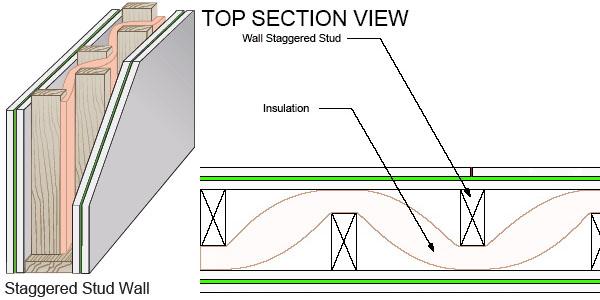



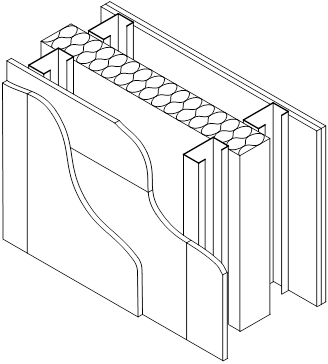



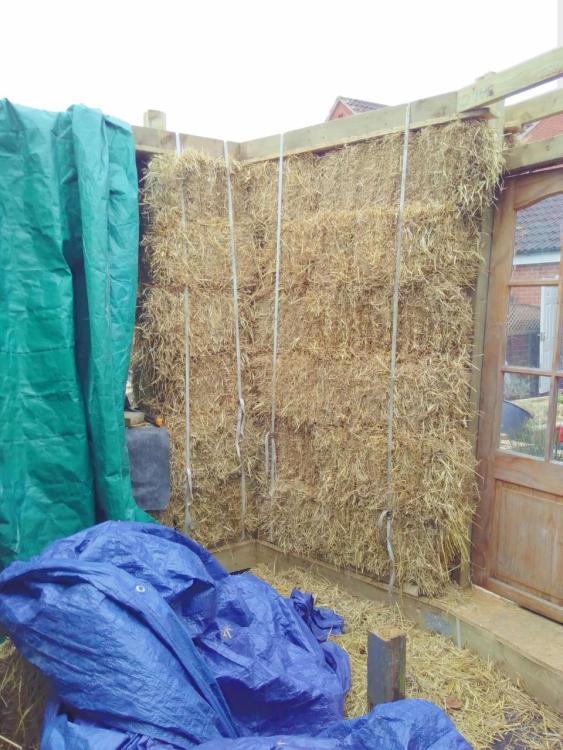
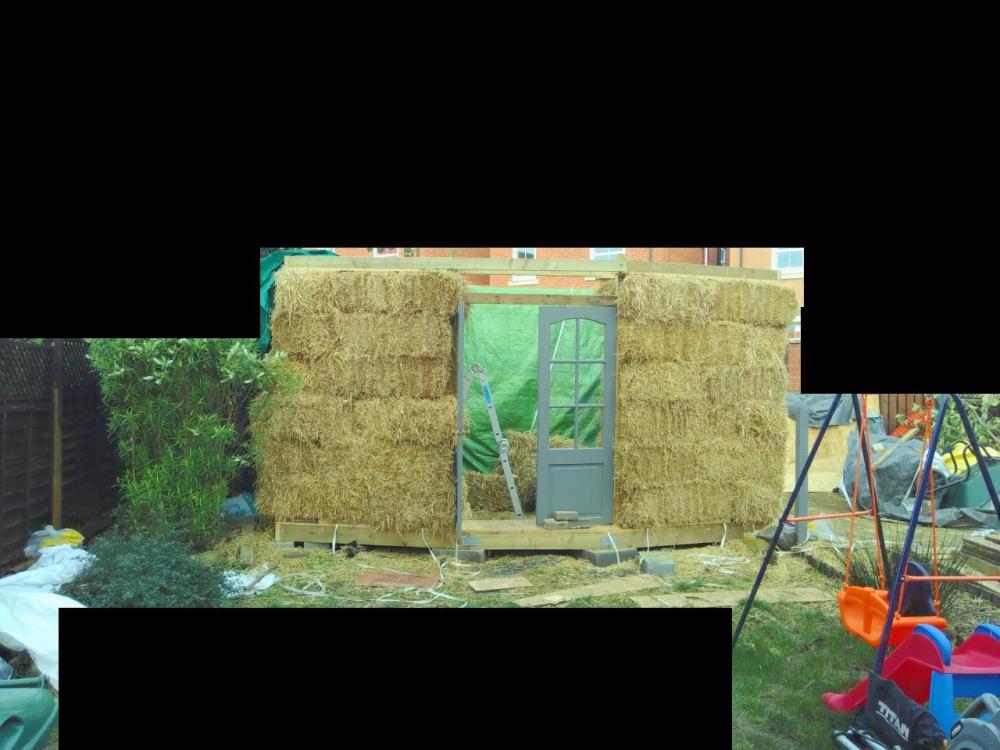
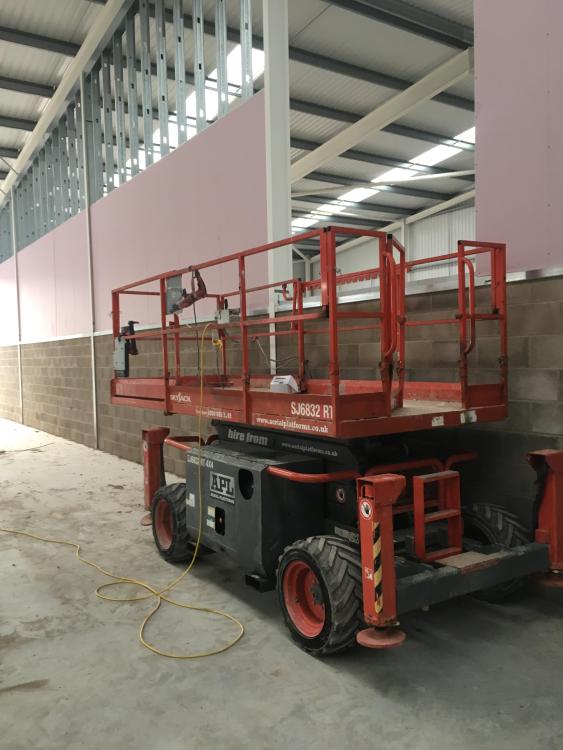








.jpg.c21f3ac78c9b7efd90cbdcb312744dc5.thumb.jpg.7adcad4c0e384f5ecd7d56b0618df6e5.jpg)